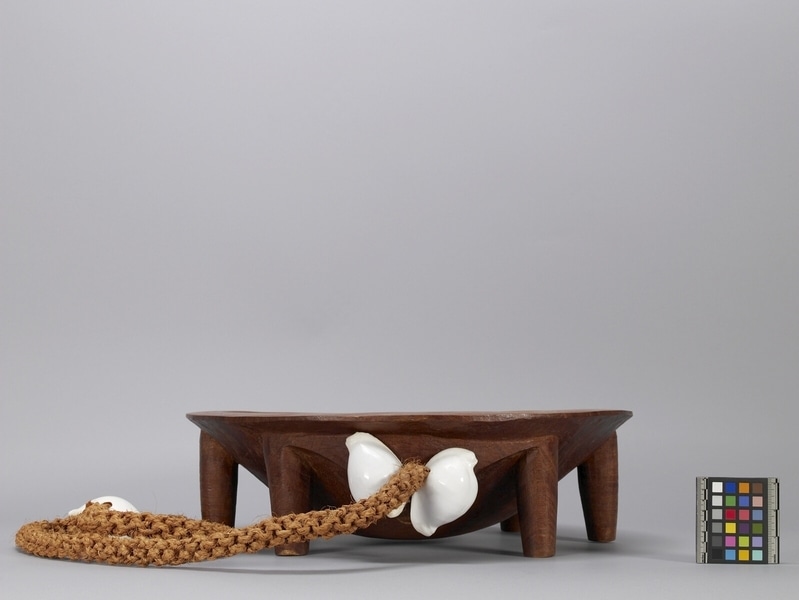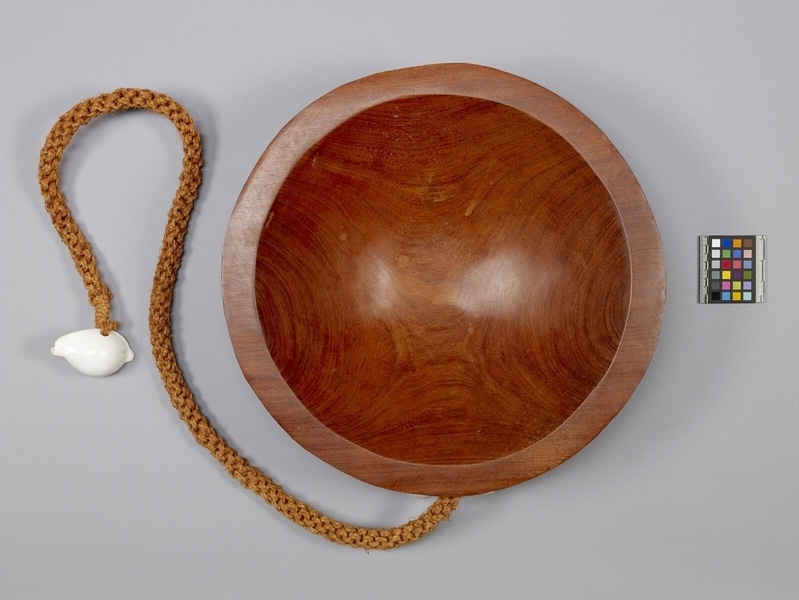Kava Bowl Item Number: 553/1 from the MOA: University of British Columbia



Description
Large, brown wooden bowl supported by six short legs. Two large white shells are affixed to one side of the bowl; between the two shells a long braided fibre rope is attached, the end of which is tied to a third white shell.
History Of Use
The tanoa, or kava bowl, is central to the yagona (kava) rituals. Yagona, derived from the pepper plant, is mixed with water in a tanoa and served with appropriate ceremony in coconut cups. The boss, or suspension lug, under the lip of the tanoa should face the highest chief present. Attached to the lug is the watabu, or sacred cord, made from coconut fibre and decorated with white cowrie shells. The watabu from each tanoa is extended towards the principal chief present, and it is said that death was the punishment for those who crossed this “line.” Today, the tanoa and the drinking of yagona are recognized as fundamental to Fijian culture and the practice has moved with Fijians to wherever they have settled.
Iconographic Meaning
White cowrie shells are symbols of divine fertility.
Item History
- Made in Fiji during 1950
- Owned by William S. Hoar before September 13, 1979
- Received from William S. Hoar (Donor) on September 13, 1979
What
- Name
- Kava Bowl
- Identification Number
- 553/1
- Type of Item
- bowl
- Material
- vesi wood, coconut husk fibre and cowrie shell
- Overall
- height 5.6 in, diameter 19.0 in
Who
- Culture
- Fijian
- Previous Owner
- William S. Hoar
- Received from
- William S. Hoar (Donor)
Where
- Holding Institution
- MOA: University of British Columbia
- Made in
- Fiji
When
- Creation Date
- during 1950
- Ownership Date
- before September 13, 1979
- Acquisition Date
- on September 13, 1979
Other
- Condition
- good
- Current Location
- Case 55
- Accession Number
- 0553/0001